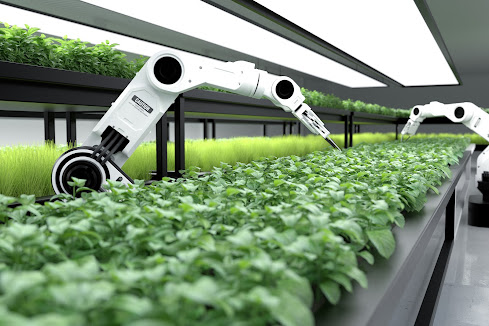Benefits of Neem Leaves | Neem Tree Benefits | Neem Plant
Is a fast growing evergreen tree native to India; it has been used as an herbal remedy since ancient times. Its bark contains salicylic acid which reduces inflammation and is commonly used in over-the-counter medications. People also use it when they have acne and psoriasis because it works very similarly to benzoyl peroxide.
Introduction
The neem tree (Azadirachta indica) belongs to the mahogany family, Meliaceae. Neem trees have been cultivated since ancient times and are native to India, Pakistan, Sri Lanka, China, Japan, Indonesia, Malaysia, Thailand, Cambodia, Vietnam, Myanmar, Laos, Nepal, Bangladesh and other parts of South Asia.
The word “Neem” means ‘to remove’ in Sanskrit, referring to the use of its oil. In ayurvedic medicine, the neem tree is known as Azadirachtin, which contains many active ingredients including nimbin, azadirachtin A etc.
It is a small evergreen tree that grows anywhere between 10-20 feet tall. Its fruit is round green pods filled with seeds that look somewhat like walnuts. Neem trees produce a milky latex sap when cut. Research suggests that this latex contains anti-fungal compounds called azadirachtin, which may help prevent mould and mildew formation. Azadirachtin reduces the number of moulds and mildews that thrive inside a home, which means less cleaning and less time spent maintaining your air quality. In addition to its antimicrobial properties, the neem leaf extracts have been shown to reduce inflammation and can stimulate the immune system.
Neem oil and its various extracts have been known to help cure many ailments including asthma, wounds, rashes, acne scars, fungal infections, arthritis, gout, psoriasis, and even cancer. Neem seeds are commonly used to control insects, moths, termites, ants, bees, flies, wasps, lice among others. The seed extracts from the neem tree have shown antibacterial activity against several bacteria including E. coli, Salmonella typhi, Staphylococcus sp., Shigella dysenteriae, Klebsiella pneumoniae, Proteus vulgaris, Pseudomonas aeruginosa, and Sarcina spp. Other studies have revealed the use of neem leaf extract in treating different skin conditions like eczema, burns, ringworm, chickenpox, herpes zoster (shingles), and warts. Leaf extracts have also been used to treat ulcers, wounds, jaundice, diabetes, fever, diarrhea, bronchitis, cough, cold, and stomach disorders.
Neem twigs and bark have been used traditionally for the treatment of eye problems such as conjunctivitis, bleeding, inflammation, and redness. These are great natural remedies due to their antiseptic and healing properties.
Neem flowers and fruits are rich in vitamin C, iron, and beta carotene. Studies have proven their efficacy in treating malaria, typhoid fever, and cholera. Neem flower extract has been proven to inhibit the growth of Plasmodium falciparum, the parasite responsible for causing malaria. Another study demonstrated that neem fruit juice had antimicrobial properties against pathogenic microbes including strains of Escherichia coli, Bacillus subtilis, Pseudomonas Aeruginosa, Streptococcus pyogenes, Candida albicans, Histoplasma capsulatum, and Aspergillus fumigatus. Neem wood is useful in treating fungal infections, insect bites, and snakebites.
In South Africa, neem twigs and bark are widely used to heal wounds, cuts, burns, and abrasions.
Neem pods are a good source of protein and fat. In India, they have been used in folk medicine for the treatment of various medical conditions such as fever, diarrhoea, constipation, and urinary tract infection. According to research, neem pods have shown anti-fungal properties against candida species. Furthermore, neem pods were able to kill Helicobacter pylori, the bacterium associated with peptic ulcer disease. Neem oil is also effective in killing anthrax spores.
Neem oil has also been proven to be an excellent remedy for curing chronic skin conditions such as psoriasis, eczema, and dermatitis. Neem oil has been used for centuries as a traditional herbal remedy in ayurvedic medicine. Ayurvedic practitioners use neem oil as a topical application for treating many skin problems. Neem oil also helps cure some bacterial infections like ringworms and fungal infections.
Neem leaves are often chewed to stop bad breath. They are also a good source of tannins, saponins, and flavonoids. Tannins in neem have also been used for treating asthma, hypertension, and kidney stones. Sapogonia, a flavone glycoside present in neem leaves, has shown antibacterial activity against several pathogens including Staphylococcus aureus, Bacillus cereus, Enterococcus faecalis, and Escherichia coli. Flavonoids have been reported to have antioxidant properties.
Neem oil contains fatty acids, vitamins such as Vitamin K and Vitamin B12, and minerals such as copper, manganese, zinc, iron, and selenium.
Some more Benefits of neem
- Antibacterial – It works against bacteria, viruses, fungi, moulds, and parasites.
- Insecticidal – It kills insects, such as mosquitoes, lice, ticks, flies, gnats, ants, cockroaches, beetles, and even spiders.
- Anti-fungal – It repels moulds, mildews, fungus, and parasites.
- It helps in killing harmful organisms without harming good ones.
- Tonic – Nimbine, the bioactive ingredient present in neem extract, is a tonic agent and aids digestion.
- Astringent – It constricts vessels and reduces bleeding.
- Anti-inflammatory – It relieves inflammatory conditions, such as arthritis, rheumatoid arthritis, gout, psoriasis, eczema, and dermatitis.
- Hemostatic – It increases blood clotting time and stops bleeding.
- Diuretic – It promotes urination and eliminates toxins.
- Neem oil contains compounds that have been proven to help treat diseases and infections.
- It’s great for insect repellent because it smells bad to insects and they don’t like it.
- You can use neem oil for cleaning purposes, including dishwashing and laundry. It works well on tough stains, and will cut grease especially well.
- Neem tree seeds can be planted next to vegetables and fruits for pest control and will attract ladybug larvae. Ladybugs eat aphids, rootworms, and whiteflies, all of which are harmful to crops.
- You can mix ground neem seed into compost and plant it around your garden.
- Neem oil is safe to use on people, pets, and even babies if applied properly!
- Crush a fresh neem fruit and place directly on cuts to speed healing and prevent infection.
- Neem is often combined with coconut oil and aloe vera gel to make a natural treatment for bug bites and stings.
- Mix two parts water with one part neem oil to create a homemade mosquito spray that really does work.
- Use neem oil mixed with vinegar to clean countertops, sinks, tubs, toilets, and mirrors.
- Rub some neem oil mixed with salt onto your feet before going to bed. This helps protect you from bugs, fungus, and bacteria.
- Neem is popular in India as a cure for colds, fever, headaches, coughs, sore throats, diarrhea, dysentery, indigestion, stomachaches, skin problems, and many other ailments.
- In Africa, neem is used as a home remedy for malaria and other illnesses.
- Many traditional healers in South America use neem for treating diabetes, high blood pressure, kidney problems, joint pain, and many other conditions.
In conclusion, neem trees are versatile plants that are useful for many purposes. Their extracts contain compounds that act against a variety of bacteria, fungi, viruses, parasites and even cancer cells.
Read More…
Neem soap for skin buy the product
Himalaya neem soap















